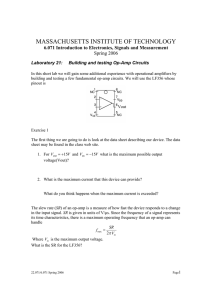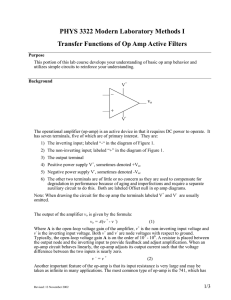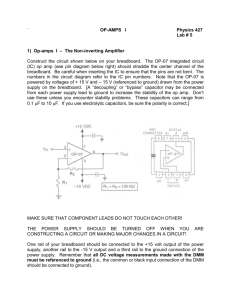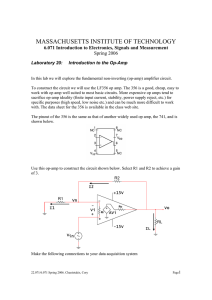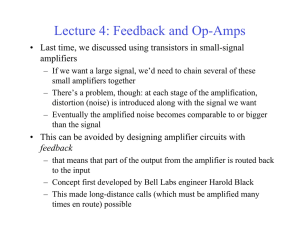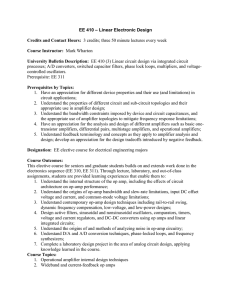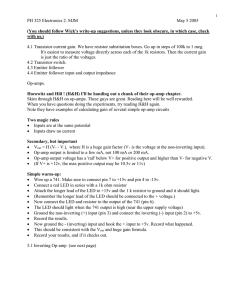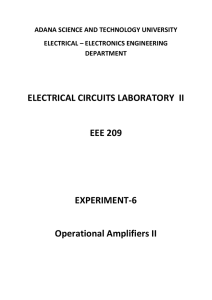Lecture 1 - Digilent Inc.
advertisement
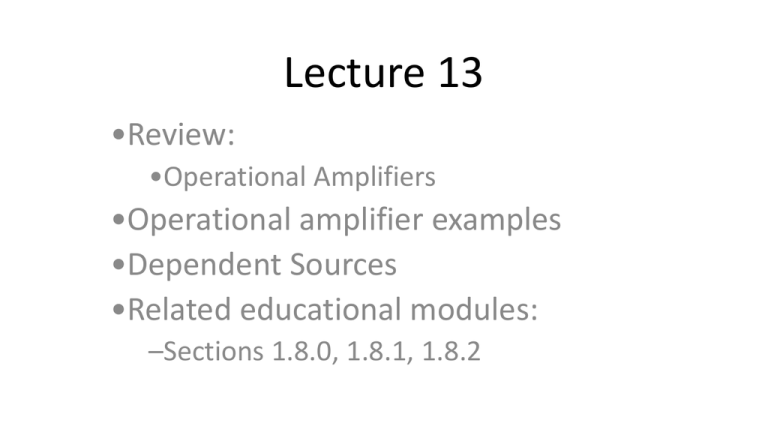
Lecture 13 •Review: •Operational Amplifiers •Operational amplifier examples •Dependent Sources •Related educational modules: –Sections 1.8.0, 1.8.1, 1.8.2 Operational Amplifiers • Circuit Symbol: ip + vin - in • Assume: ip = 0, in = 0; vin = 0; V - < vout < V + Lecture 12, example 1 VOUT Rf Vin Rin Op-amp circuit applications • Operational-amplifier based circuits are often used to implement mathematical operations • Example: • The circuit of Lecture 12, example 1 performs multiplication by a negative constant VOUT Rf Vin KVin Rin • Inverting voltage amplifier Saturation • The op-amp output is limited by V+ and V• The operational amplifier output is not purely linear • If the output reaches the supply “rails”, the output “saturates” • Lecture 12, Example 1: VOUT KVin Þ Op-amp circuit – Example 1 • Find Vout R R R V1 +- + V2 + - + VOUT - Op-amp circuit – example 2 • Find Vout Op-amp circuit applications • Operational-amplifier can be used to isolate sections of a circuit from one another • The operational amplifier has a very high input resistance • Example: • The circuit example 2 draws no power from Vin Example 2 – revisited • We have a 3k load which requires 6V, but we only have access to a 12V supply. Dependent Sources • Operational amplifier based circuits are often modeled as dependent sources • Review: Four types of dependent sources: • • • • Voltage controlled voltage source (VCVS) Current controlled voltage source (CCVS) Voltage controlled current source (VCCS) Current controlled current source (CCCS) Dependent Sources – circuit symbols • VCVS: • CCVS: • VCCS: • CCCS: Op-amp circuit as dependent source -- example • Inverting voltage amplifier: VOUT Rf Vin Rin Analysis of circuits with dependent sources • Can still use: – – – – – KVL KCL Ohm’s Law Nodal analysis Mesh analysis Dependent source analysis – example 1 • Find the current, i Dependent source analysis – example 2 • Find the voltage, v

